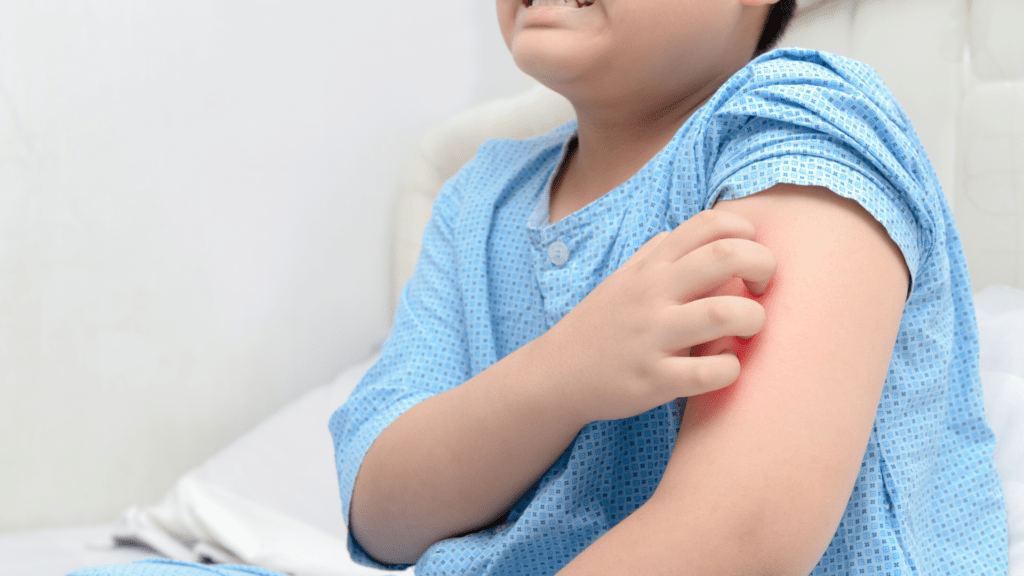
Rashes in kids—when to worry
Rashes are a common source of visits to the doctor, especially among kids. Occasionally, they can be a sign of very serious illness. Most of the time, they’re just a mild annoyance. The trouble with rashes is that the difference between harmful and harmless rashes can be tough to spot.
Dr. Anthony Crocco, Chief of Pediatric Emergency at McMaster Children’s Hospital, explains that rashes are the skin’s reaction to something going on inside the body. Skin plays three main roles:
· It keeps bad things outside the body (helps prevent infection)
· It keeps important things, like our organs and bodily fluids inside our body
· It helps us feel things like heat, cold, and warmth, which can provide important information for our brains
“Most rashes are a bit of swelling on the surface of the skin,” says Dr. Crocco. “When there is a virus inside the body causing an infection, a rash can appear as the body is trying to fight the infection. This often appears as red spots all over the body.”
Spotting a concerning rash
Dr. Crocco recommends checking for 5 characteristics to help determine whether a rash is cause for concern and one that should be seen in the Emergency Department.
Blanching
Blanching is when the skin turns lighter in colour when you press down on it. This is a normal reaction. Check to see if a rash blanches. If it doesn’t lighten when pressed, it might be more serious.
Bubbles
Fluid-filled bubbles can be cause for concern. Sometimes, they are the result of a burn, but infections (like chickenpox) and reactions to certain medication can also cause them. It is very easy for this delicate skin to break, so bubbling skin should be treated very carefully. If the skin breaks, it can quickly get infected.
Infection
Is the rash growing? Hot? Swollen, red, or painful? A single spot or path that has any of these characteristics can signal a serious infection in that area of the body. It may not get better on its own.
“I prefer when someone has individual red spots all over the body to one spot that is growing,” says Dr. Crocco. “A single growing spot can be serious.”
Hives
Hives can be perfectly harmless, but they can also be associated with anaphylaxis, a life-threatening allergic reaction. To be on the safe side, it’s best to seek immediate medical care in case the hives are part of a larger allergic reaction. Healthcare professionals can check for other anaphylaxis symptoms to rule out serious concern.
Kawasaki disease
Kawasaki disease is very rare, but can lead to serious complications if it’s not caught early. If a rash is accompanied by a fever lasting 5 or more days, visit the Emergency Department so doctors can rule out Kawasaki disease.
If your child has any of the above five symptoms, a visit to the Emergency Department is recommended. The Emergency Department at McMaster Children’s Hospital is staffed with people who have special training in kids’ health.
The big picture on rashes
Most rashes do get better on their own, but if you aren’t sure about a rash, or if your child appears unwell in addition to having a rash, you should get immediate medical help.
Benign rashes (the non-harmful kind) get better on their own, but can be itchy. Treat the itch with an antihistamine (allergy medicine). Your pharmacist can help you decide what to use. Dr. Crocco recommends avoiding diphenhydramine (Benadryl) for itch relief because of potential side effects. Safer antihistamines are available and the pharmacist can help you find them. Itching itself can be a concern. If your child is scratching to the point of bleeding, they may develop an infection.
Remember, if you’re unsure, visit your family doctor or make a trip to the Emergency Department.

:max_bytes(150000):strip_icc()/Getty-shingles-rash-56a5b7493df78cf7728987b9.jpg)